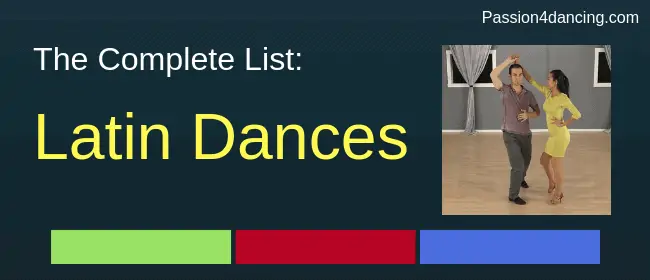
Latin Dances (Club Style):
Merengue
Originated in Dominican Republic. The Merengue is one of the simplest dances beginners can learn. It is based on “Marching” as both partners switch weight from foot to foot – Accentuating the strong beats of the music. This dance has less structure than some of the other dances because of how easy it is.
A guide on how to dance Merengue basics
Salsa On 1 – LA Style
Salsa on 1 is one of the most popular social dances and is danced all over the world. Salsa on 1 is danced in a “slot” and has a lot of turns, spins and crossbody lead moves. It gets a lot of influence from other Ballroom dances, as well as other styles of dancing. In this style both partners start dancing on count 1 – hence the name “Salsa on 1”. Overall this style of Salsa has a sharper, more direct feel to it – which makes it perfect for beginners.
Salsa On 2 – New York Style
Salsa on 2 is almost identical to the moves danced in the “on 1” style, however the biggest difference is that dancers start dancing on count 2. Furthermore, Salsa on 2 dancers say that by dancing “on 2” they connect better with the different musical instruments of Latin songs including: Bajo (bass), Conga and Clave. Overall the “On 2” style has a smoother and slower feeling to it than the “on 1” style.
Bachata
This Latin dance originated from the Dominican Republic. In this dance both partners move from side to side, incorporating body action and hip action. A key aspect of this dance is that for every 4 count, there are 3 full side steps (weight changes) and 1 step with no weight change (“tap” the foot). The Bachata music tends to be very sensual with strong, distinct beats – which helps characterize the styling of this dance.
Learn how to dance Bachata basics here.
Kizomba
This Latin dance originated in Angola. The character of this dance is slow, sensual movement, with easy basic steps done in a close embrace position – similar to Argentine Tango. There are a lot of walking type of movements, Swivels and hip movements in this dance, accentuating the music. This dance is gaining popularity in recent years.
Cha Cha (Club Style)
The Cha Cha originated in Cuba. In this dance you need to use very quick, sharp steps in order to keep up with the fast rhythm of the music. A key feature of the Cha Cha basic steps is that they usually include Chasse steps (Series of three steps) to the side, forward and back. The Club style Cha Cha is danced in many Latin clubs and the moves used are similar to the ones used in Salsa and Merengue. It’s important to note that the Ballroom style Cha Cha (below) is different from the Club style Cha Cha.
Next, 2 Latin Ballroom Dance Styles:
American Rhythm Dances (Ballroom Latin Style):
Rumba (Am. Style)
The American style Rumba is one of the most social dances you can learn because its music fits many popular songs. This dance is characterized with smooth body and hip movement – while accentuating the Slow, Quick, Quick, timing with the feet. The main basic step consists of a box step pattern.
Learn how to dance the Rumba basics
Cha Cha (Am. Style)
This American style Cha Cha is different from the Club style Cha Cha (mentioned above). In this dance the partners accent the strong beats of the music by pushing off their feet and showing a strong hip action. In this Cha Cha style the movements are big and defined – Especially accenting count “1” – which is the strongest beat in the music.
East Coast Swing
The East Coast Swing style is derived from the Lindy hop. It is a very fun and playful dance where the main basic steps include triple steps from side to side. This dance includes lots of underarm turns, loops, and spins. The music is not too fast, and not too slow – allowing for plenty of shaping and arm styling.
How to Swing Dance For Beginners Guide
East Coast Swing Dance Steps
Mambo
This dance originated in Cuba and later had a lot of influence from New York to make it what it is today. The moves in the American style Mambo are very similar to what is done in Salsa, however it has a Ballroom flare to it – where the moves and turns are more exaggerated/pronounced. This dance is danced on “2”.
Bolero
The Bolero is the slowest of the American Rhythm Latin dances. In this dance the partners push off their feet strongly in order to make big steps and there is a rise and fall used through out. Lastly, this dance has a lot of upper body shaping (similar to Waltz and other smooth dances).
International Latin Dances (Ballroom Latin Style):
Cha Cha (Int. Style)
The International style Latin Cha Cha dance is similar to the above Cha Cha styles, however the main difference is that in this style the dancers step on a “straight leg” as they transfer weight from foot to foot. The moves in this style are more “linear” with a strong emphasize on accenting the timing which is: 1,2,3, Cha Cha.
Learn the International Cha Cha steps
Samba (Int. Style)
The International style Samba originated from the Brazilian Samba carnivals. In this dance there is a “bounce” technique used, where the partners are constantly bending and straightening their knees as they move from foot to foot. Because of the “bouncing action” this dance allows for a lot of body and hip movement.
Learn the International Samba steps
Rumba (Int. Style)
The Int. style Rumba is quite different from the Am. style Rumba (mentioned above). In this Rumba the dancers arrive mostly on a straight leg, and the figures are “linear”. There is a very strong emphasize on doing “sensual” hip movement (figure 8) and arm extensions to express the slow tempo Rumba music.
Learn the International Rumba steps
Paso Doble (Int. Style)
This dance originated from Spain and is mostly done in Int. Style competitions, as opposed to social dance events. In this dance the couples use a strong “marching” walk technique to cover the floor, and there is a lot of big shaping movements and “Apels” used. “Apel is when the dancer stomps their foot strongly on the floor (At times creating a loud stomping noise).
Learn the International Paso Doble steps
Jive (Int. Style)
The Jive has a very similar character to the Swing, but this dance is much faster. There are a lot of turns, spins and kicks in this dance. The couples must keep their posture more forward than usual, in order to keep up with the fast paced music. The technique used in this dance includes “hopping/jumping” on almost every single step.
Learn the International Jive steps
Watch Video:
Related:
Complete List of Ballroom dances
Easy basic steps for beginners
How To Ballroom dance for beginners
How To Dance At Weddings
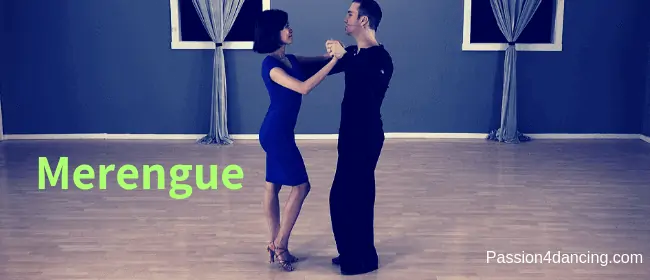
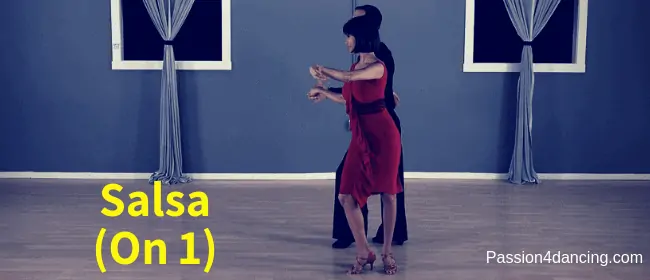
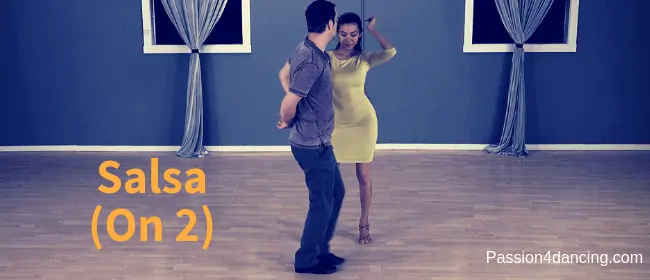
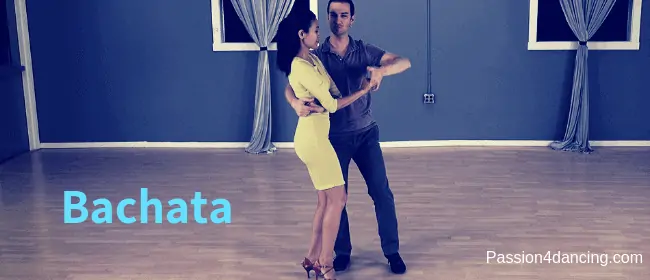
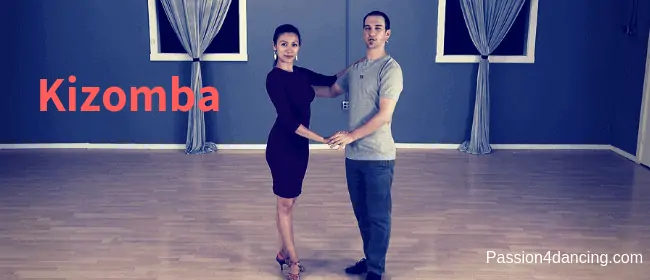
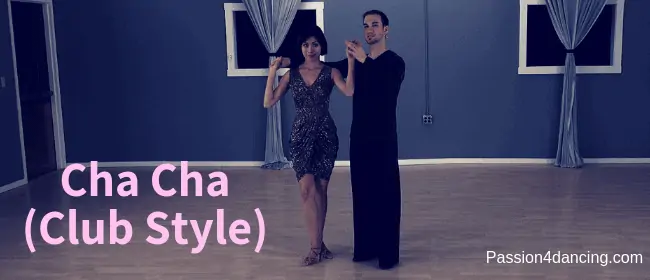
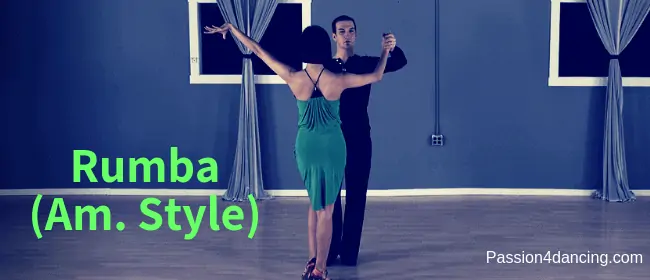
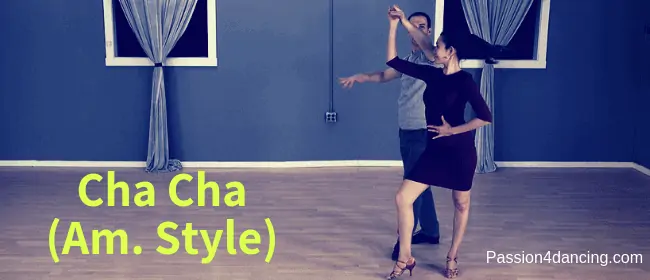
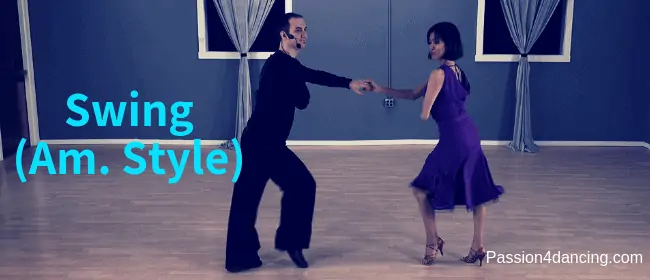
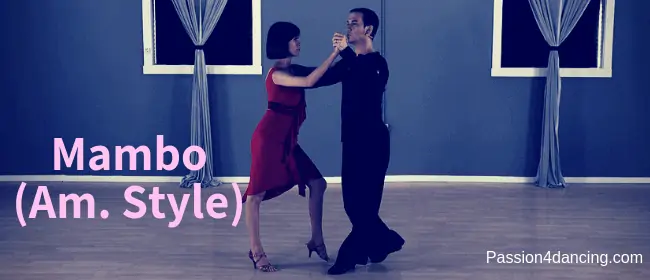
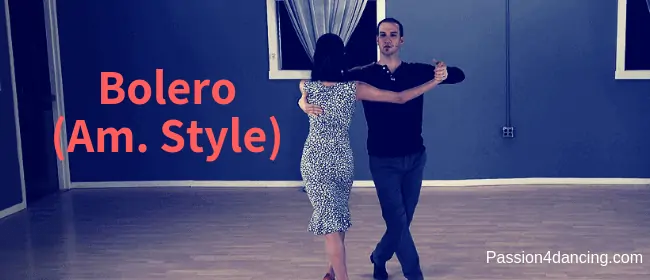
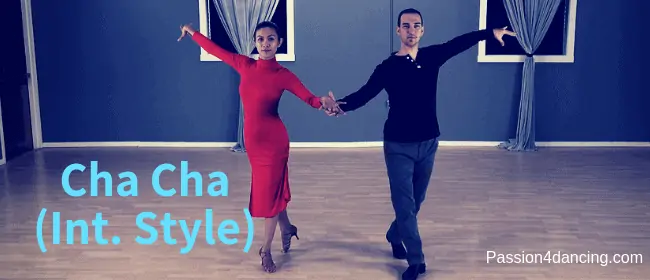
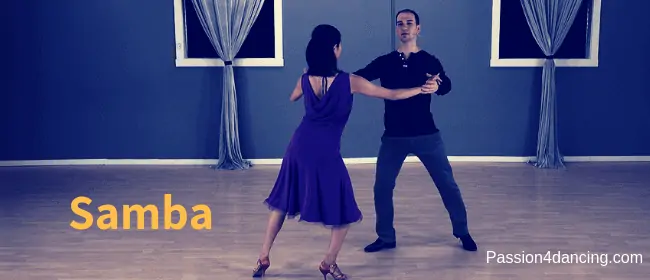
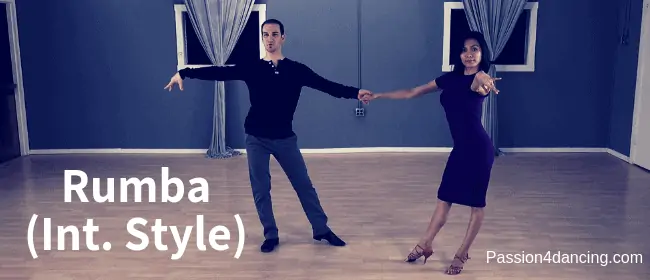
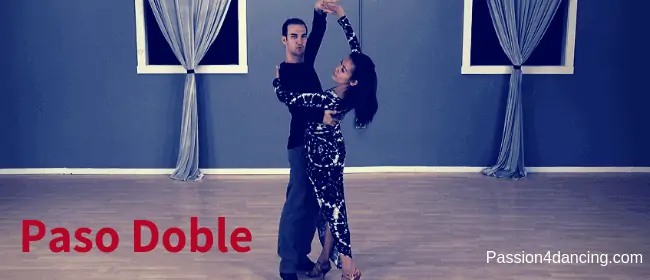
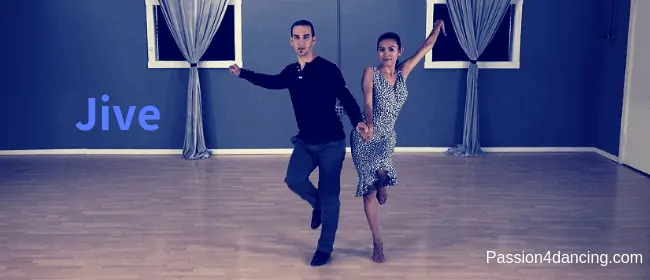
Hello Leon,
Will you be adding Mambo to your online lessons?
Yes we hope to in the future. Don’t know exactly when yet. For now you can refer to our Salsa lessons which use almost the same steps, just the counts are different.
You named each dance and where it originated except for SALSA which is probably the most popular Latin dance. It originated in my country, Puerto Rico. It would be nice to see this posted in your description. Thank you.
Very very informative. Your research on all dance forms will help others to know more about latin dances.
Thank you!! for sharing so many other Latin dance forms with us! I barely knew a few of them like salsa, bachata, kizomba…..
There is a dance very simular to the rhumba
But quicker 1 23 . What name please?